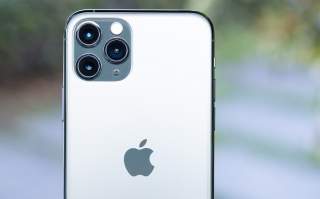What Apple's iPhone 12 Needs To Smash Samsung Galaxy S20
Here are the top features that the iPhone 12 needs in order to beat the S20.
Samsung came out with guns blazing at this year's Unpacked event, revealing some of the most impressive hardware ever featured on an android device with their Galaxy S20 lineup. The Galaxy S20, available for purchase early next month, is Samsung’s most ambitious attempt yet to supplant the iPhone in the premium smartphone category.
How will Apple fight back? Though it’s likely that we’re still at least half a year away from the announcement of Apple’s next flagship phone, a steady trickle of leaks from industry insiders is giving us an increasingly coherent picture of what to expect from the next iPhone.
Here are the top features that the iPhone 12 needs in order to beat the S20.
Razer and Asus may have done it first, but the S20 will be the first mass-marketed and widely owned smartphone to come with a 120Hz refresh rate display. With more and more players in the North American market adopting high refresh rate displays, it’s exceedingly difficult to envision the 2020 Phone shipping without this feature. Unsurprisingly, numerous leaks have confirmed that the iPhone 12 will ship with a 120Hz OLED panel similar to the 2018 iPad Pro’s 'proMotion' display. Still, the question is over implementation; whereas the S20 forces users to choose between 120Hz at a lower 1080p resolution or the standard 60Hz at a higher 1440p resolution, Apple has an opportunity with the iPhone 12 to offer a 120Hz experience without compromises in image quality. Speaking of displays, Apple would do well to increase the screen sizes for the more expensive iPhone 12 models; this generation’s top-end iPhone 11 Pro Max has only a 6.5-inch display, coming up significantly short against the S20 Ultra’s gargantuan 6.9 Inch panel. Oh, and it’s time for a notch-free iPhone to compete with the tiny camera cutout of Samsung’s "Infinity-O" display.
Like the S20, the iPhone 12 is widely expected to feature 5G network connectivity. But here, too, the devil is in the details: the entry-level S20 model only works with a “sub-6 GHz” band of 5G that’s not much faster than current 4G speeds, and it’s fully possible that Apple will opt for a similar compromise with the base iPhone 12 model to keep prices down. Apple is reportedly experimenting with a proprietary 5g antenna for the iPhone, but it remains to be seen how these efforts will translate into concrete benefits for the end-user.
Apple has long maintained a performance lead over Android with its in-house chipsets-- for reference, the A13 chip of the iPhone 11 crushed the Snapdragon 855 in synthetic benchmarks--and there is little reason to suppose that the performance matchup between the iPhone 12’s A14 chip and S20’s Snapdragon 865 will go any differently. On the other hand, there is no indication that Apple is planning to bump the storage capacity of the base iPhone 12 up to the 128GB of the competing S20-- a more modest capacity of 64GB remains likely for the base configuration. Other nice-to-haves that Apple would do well to import from the Galaxy line, though ones that don’t seem terribly likely, are a screen-embedded fingerprint scanner and reverse-wireless charging capability.
Hardware specifications notwithstanding, Apple’s biggest opportunity lies in pricing: with Samsung asking record-breaking prices for the top-end S20 models, the ball is in Apple’s court to deliver a premium 5G experience without a substantial MSRP hike from the current iPhone 11 line.
Mark Episkopos is a frequent contributor to The National Interest and serves as a research assistant at the Center for the National Interest. Mark is also a PhD student in History at American University.

